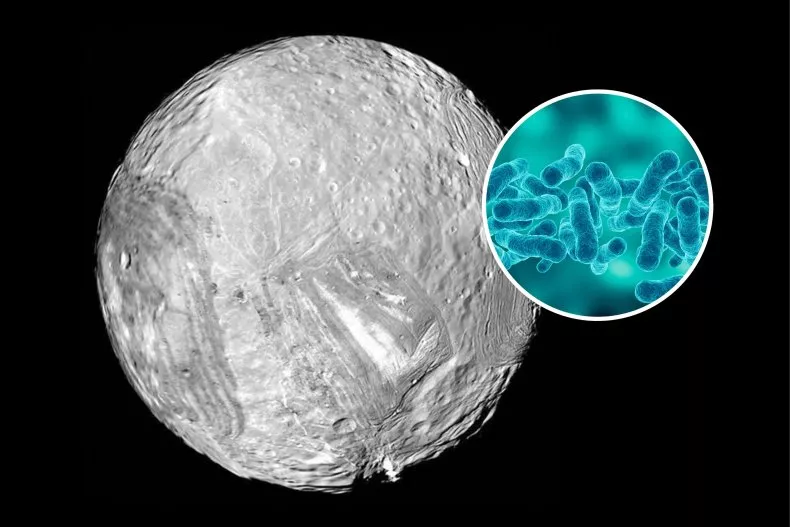New Study Reveals Subterranean Sea with Potential for Life
In a recent breakthrough, scientists have identified tantalizing evidence that Uranus’s moon may harbor conditions favorable for life. This remarkable discovery suggests that one of Uranus’s largest moons could possess a subsurface ocean, creating an environment where extraterrestrial life could potentially thrive.
The Discovery: An Underground Sea Beneath the Earth
Subsurface oceans are not new discoveries in the world of planetary science but mark a landmark discovery for the moons of Uranus. Through data acquired from the Voyager 2 flyby and more recent telescopic observations, scientists have made such indications of liquid water as being situated below the icy crust on one of Uranus’s moons – either Ariel or Miranda. It is supposed to stay in the liquid phase by the heat generated from the tidal forces of Uranus.
This classifies the moon as being part of a specific type of space objects that scientists believe may harbor life; two others are Europa orbiting Jupiter and Enceladus, which orbits Saturn and are confirmed to have oceans beneath their surfaces.
Why a Subsurface Ocean Could Sustain Life
So, why is a subsurface ocean so significant? Life as we know it relies on three primary conditions: water, chemical nutrients, and an energy source. On Earth, even the most extreme forms of life, such as microbes, thrive in hydrothermal vents deep within our oceans. The theory is that, similarly, these subsurface oceans on Uranus’s moon could sustain life by providing:
- Liquid Water: The presence of liquid water, albeit underground, is a key ingredient in the search for life beyond Earth.
- Chemical Nutrients: Materials from the moon’s rocky core could mix with the water, providing nutrients essential for life.
- Heat and Energy: Tidal forces could produce enough heat to maintain a liquid state in the ocean and power chemical reactions, potentially creating habitable conditions.
How Could We Explore These Moons?
While our current exploration capabilities limit our ability to directly probe Uranus’s moons, NASA has recently shown interest in a Uranus mission, potentially launching in the 2030s. Such a mission could send spacecraft equipped with advanced spectrometers, magnetometers, and other instruments to detect subsurface water and analyze the chemical composition of the moon’s surface.
What Are the Chances of Finding Life?
While scientists remain cautiously optimistic, finding life will depend on whether this subsurface ocean has stable, life-supporting conditions. If further evidence confirms its existence, the next step would be understanding the ocean’s chemistry and whether it has the complex organic molecules needed for life.
The Implications of Finding Life on Uranus’s Moon
A discovery of life on one of Uranus’s moons would reshape our understanding of biology and the types of environments life can inhabit. Such a find could imply that life is more widespread across the cosmos than we previously thought, and it could answer some of humanity’s oldest questions: Are we alone in the universe?
Conclusion
But much work remains to be confirmed in this subsurface sea. Possibilities are excitingly fascinating: an ocean hidden beneath an icy crust to the faint promise of alien life. Our solar system still holds enormous secrets as revealed by a recent study. Whether microbes exist here or just new clues will be found, there’s one thing for sure-there’s much work in understanding the universe ahead of us.
Source











